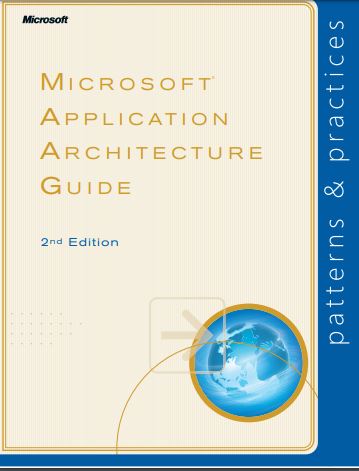Microsoft Application Architecture Guide 2 edition is primarily written for developers and solution architects who are looking for guidance on architecting and designing applications on the Microsoft platform and the .NET Framework.
However, this guide will benefit any technologist who is generally interested in the field of application architecture and design, wishes to understand the underlying patterns and principles behind good application design on the Microsoft platform or the .NET Framework, or is new to the Microsoft platform or the .NET Framework.

This e-book is not a step-by-step tutorial for application architecture and design, but rather an overview and a reference.
The e-book is divided into four main sections, each containing a number of chapters:
- The first section of the e-book, “Software Architecture and Design,” provides a summary of the underlying principles and patterns that provide the foundation for good application architecture and design and a suggested approach for creating your architecture design. If you are using the book to learn about the fundamentals of application architecture, start with this section and then work through the remaining parts to learn about layered design, components, quality attributes, crosscutting concerns, communication, deployment, and common application types.
- The second section of the e-book, “Design Fundamentals,” provides generally applicable guidance for designing a solution’s layers, components, and services; and guidance on addressing quality attributes and crosscutting concerns. It also covers communication and deployment topics. If you want to learn about the layered approach to application architecture and design or the design of specific components and services, start with this section and then explore the following sections to see how to take account of quality attributes and how to design a physical deployment strategy.
- The third section of the e-book, “Application Archetypes,” provides specific guidance on the architecture and design of typical application types, such as Web, RIA, rich client, mobile, and services applications. If you have some prior experience with application architecture and design and want to learn about the architecture and major design features of common types of application and the specific guidance for each type, start with this section and then use the remaining sections to expand and verify your knowledge.
- In the fourth section of the e-book, the Appendices provide an overview of the Microsoft platform and .NET Framework technologies and their capabilities. This section also provides a summary of common design patterns and references to additional resources and materials. If you are new to the .NET Framework, or want to learn about the technologies available on the Microsoft platform, use this section to get an overview of the .NET Framework and platform services, see the major technology matrices, and read descriptions of patterns & practices assets such as Enterprise Library and the patterns & practices design pattern library.
Microsoft Application Architecture Guide | Table of Contents
Read the PDF version at Microsoft Application Architecture Guide 2 edition